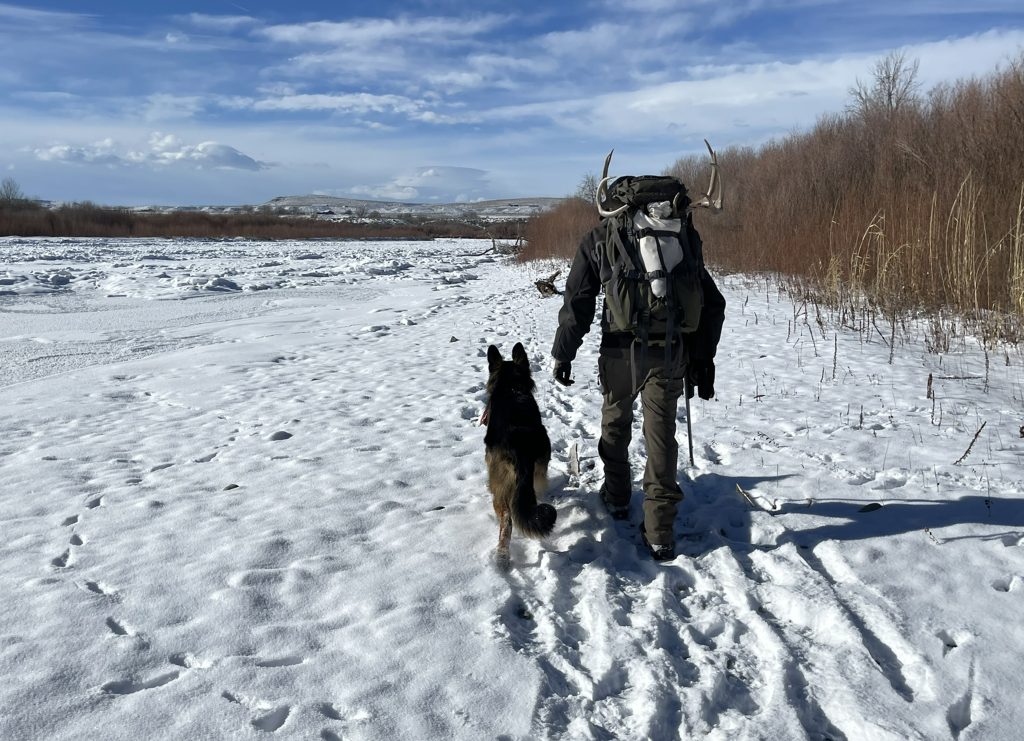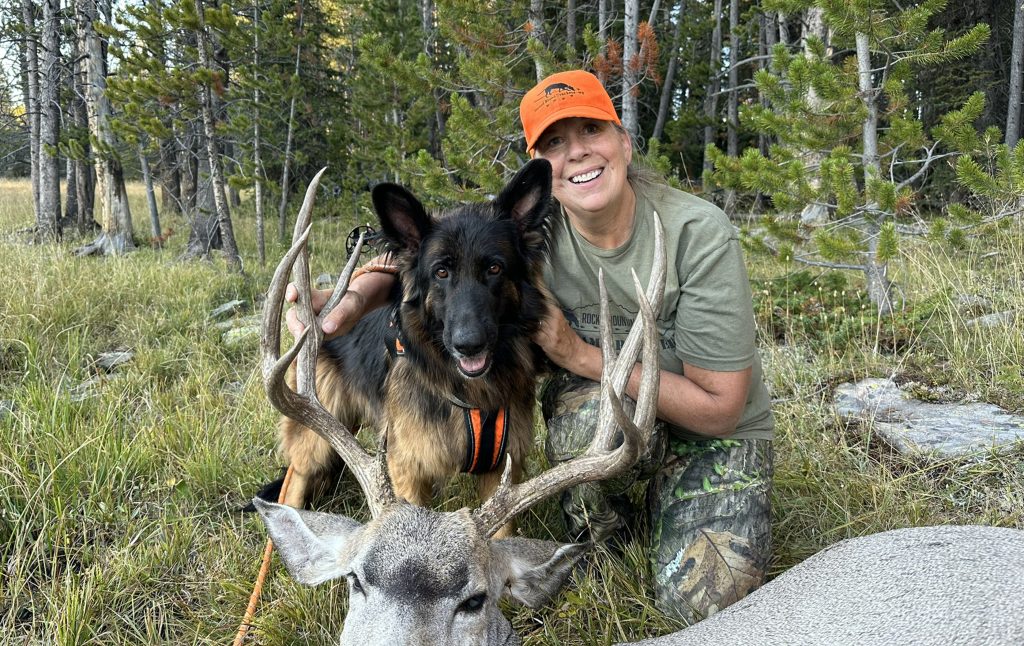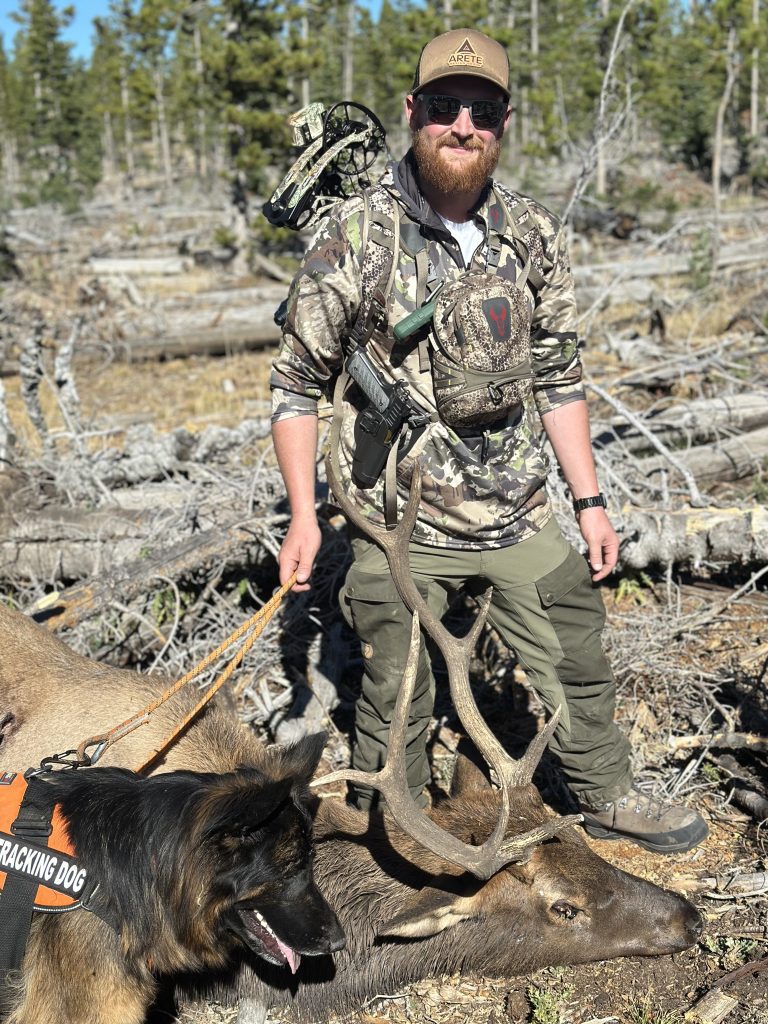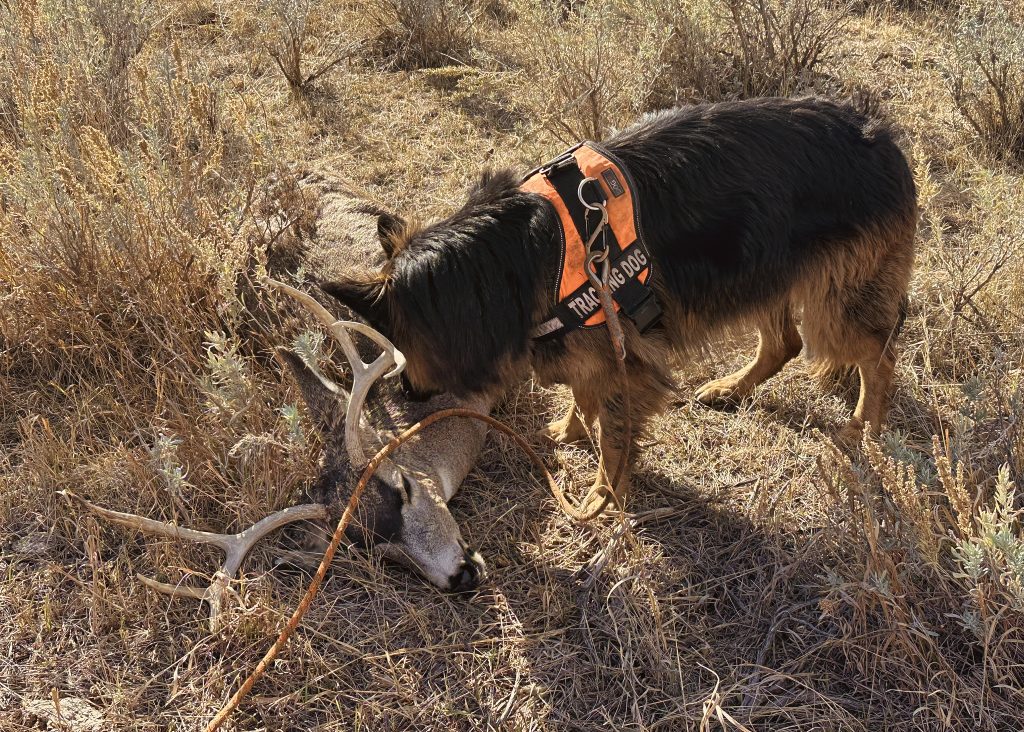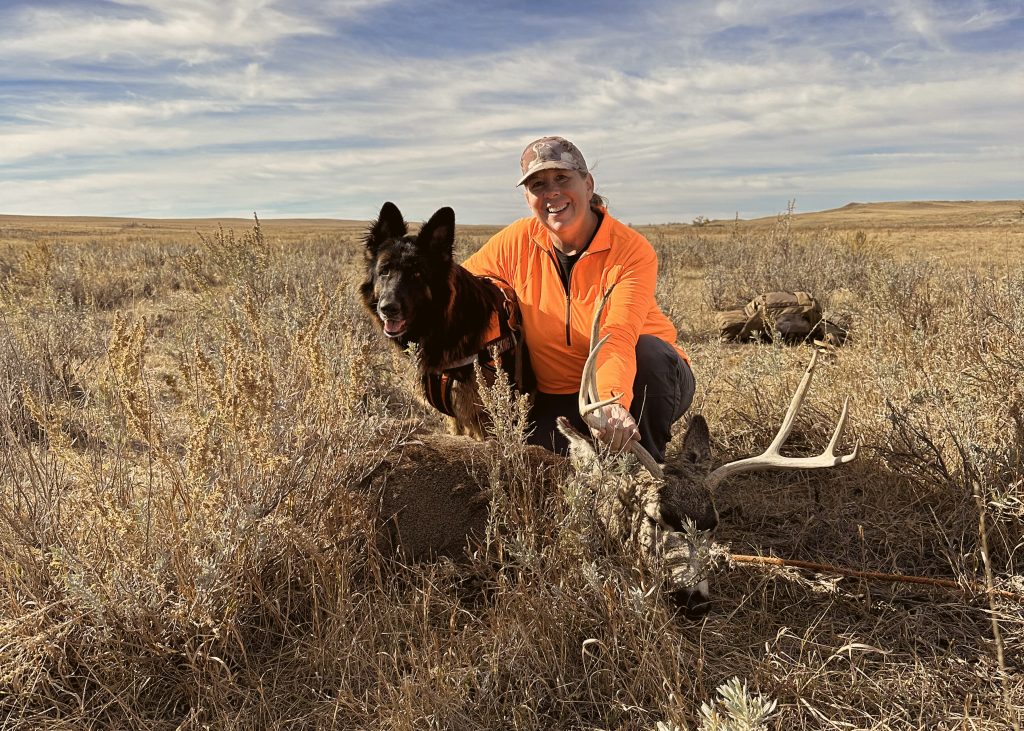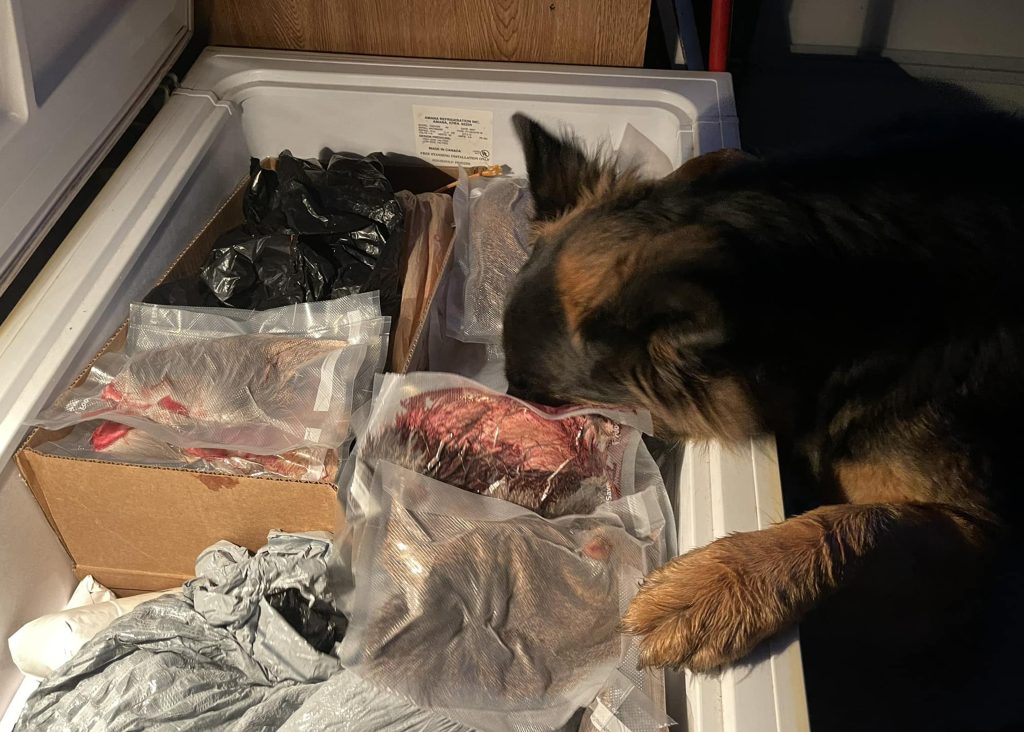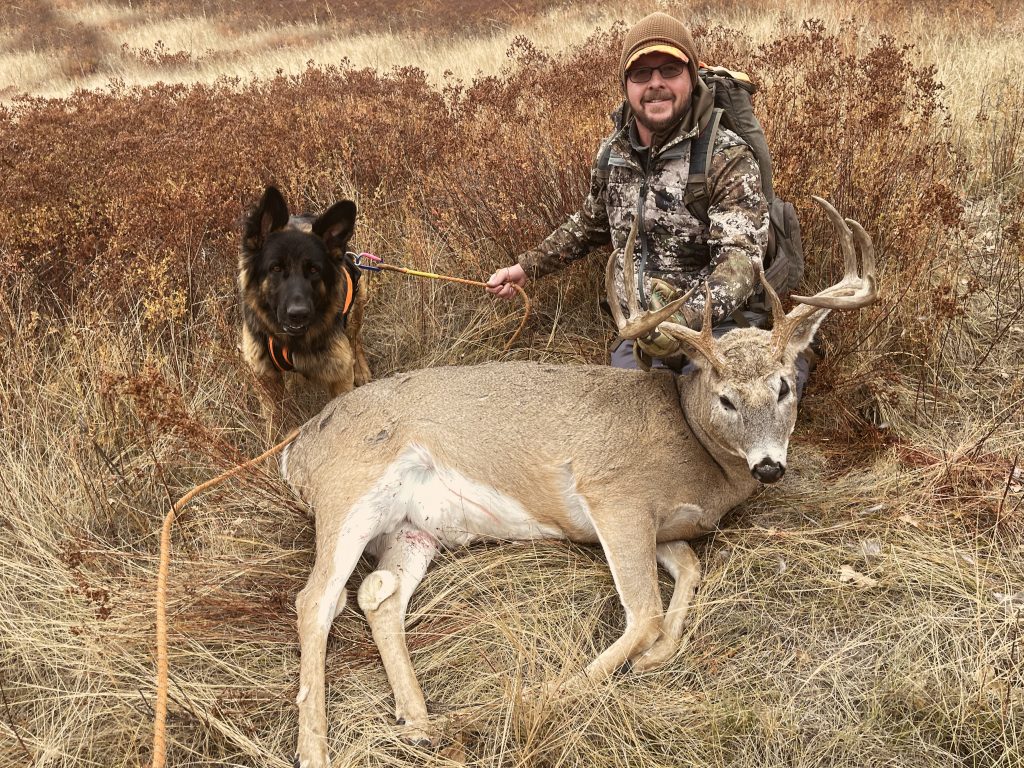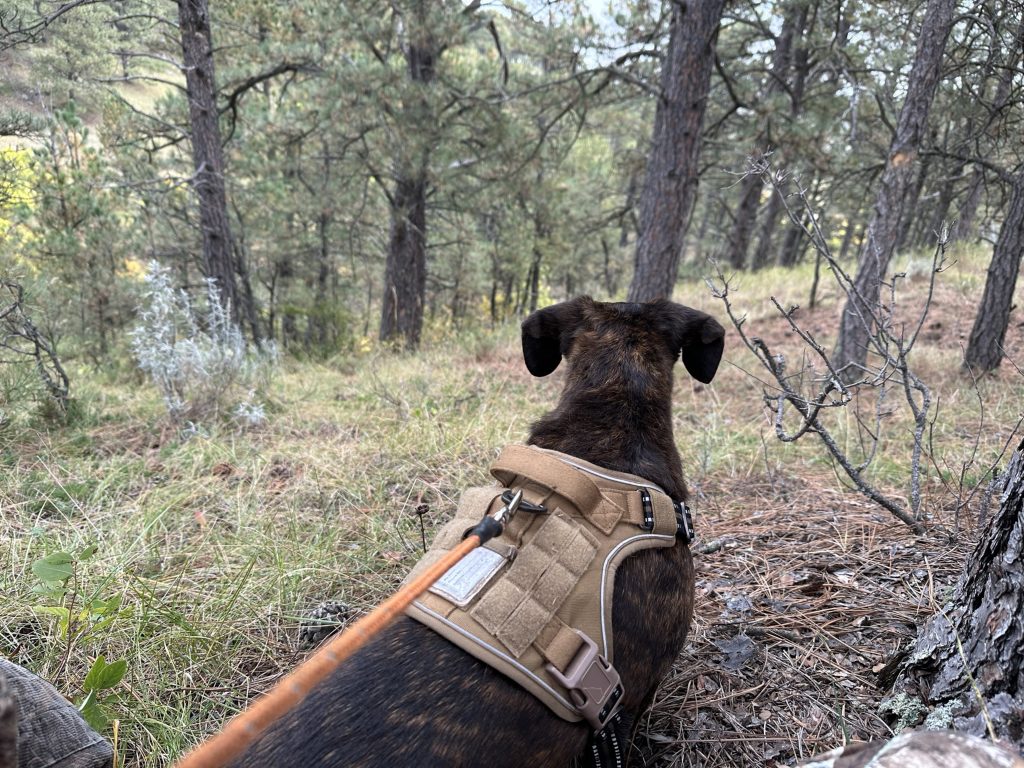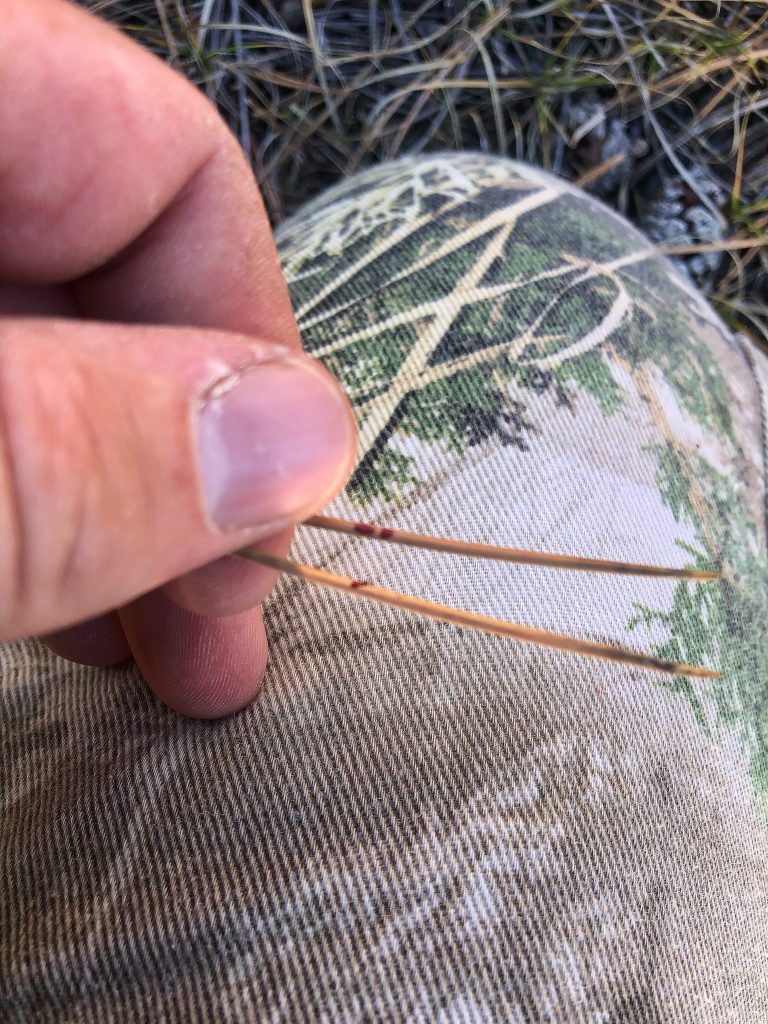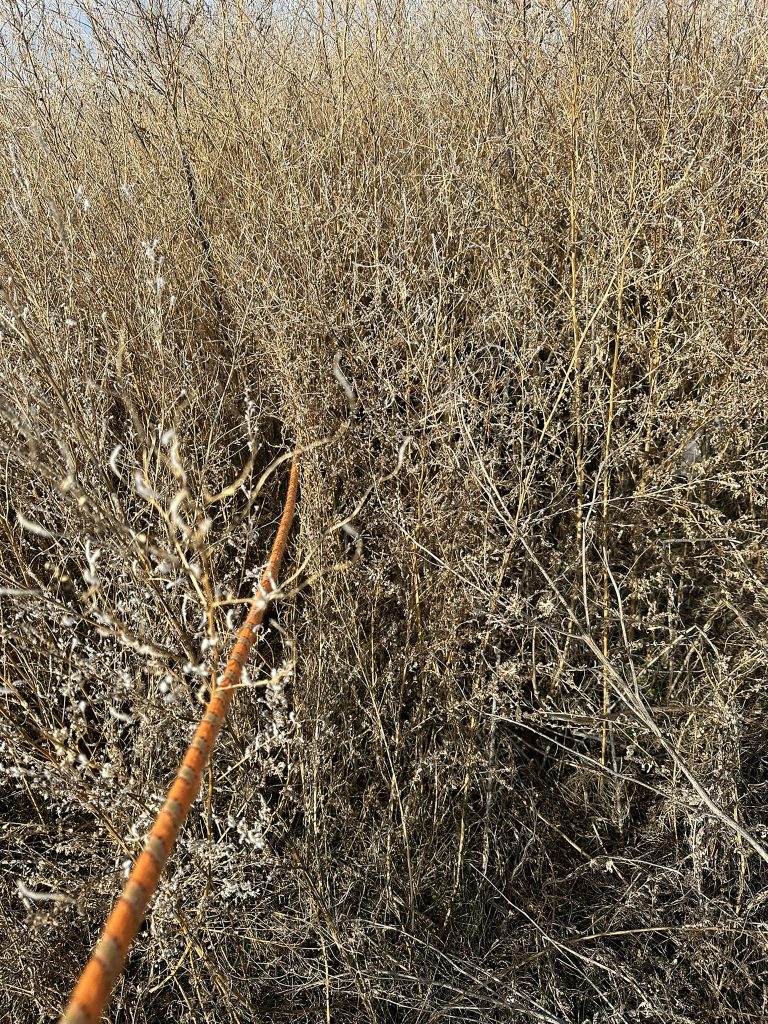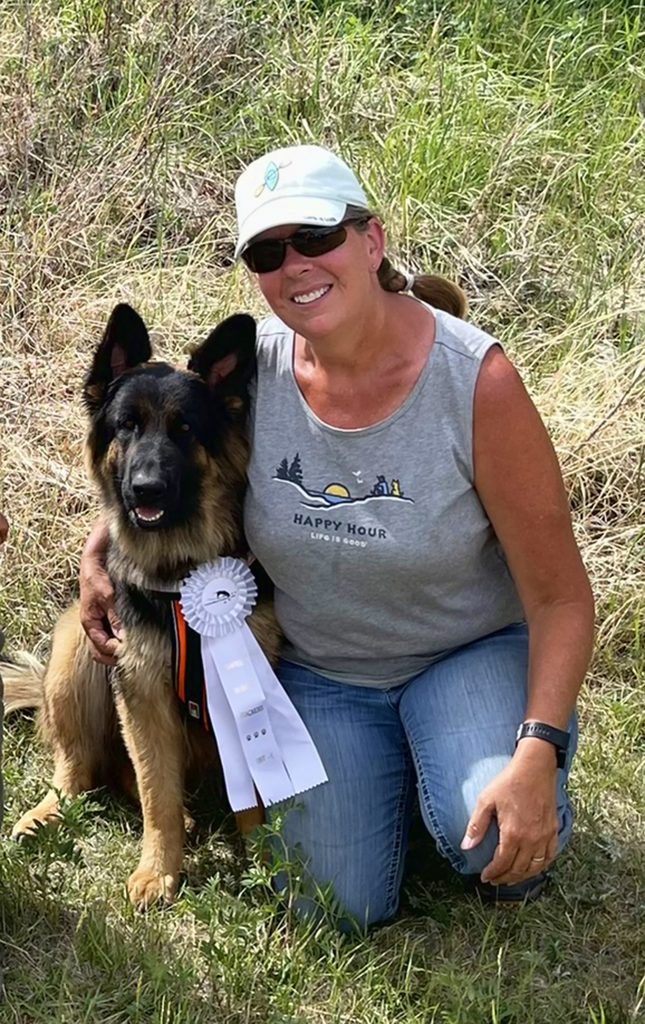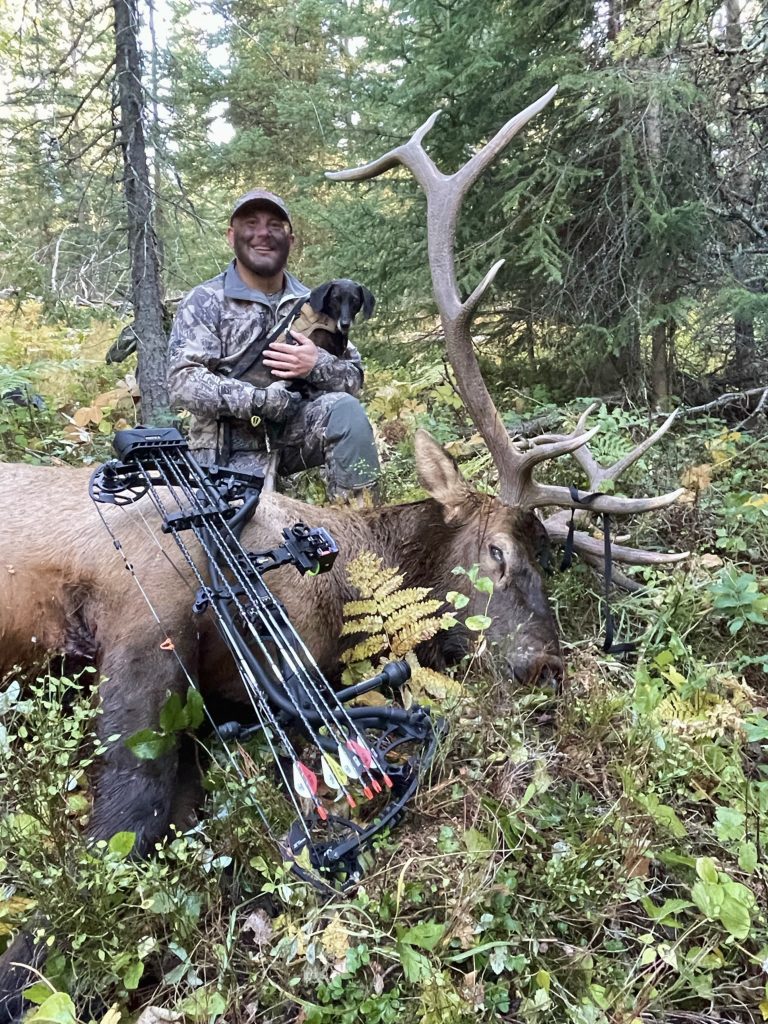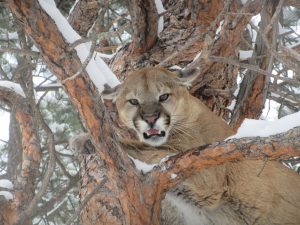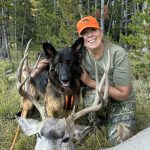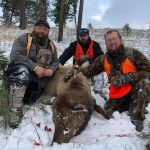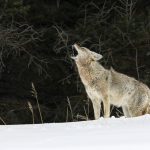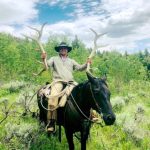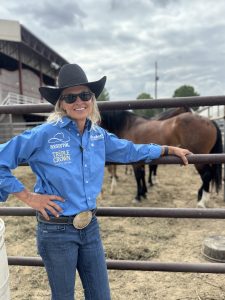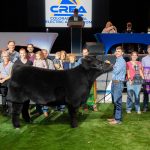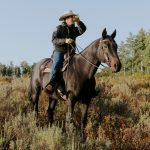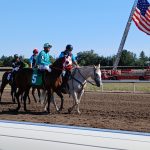Open Season 2025 | Kimber Tracks
More humane hunting through tracking
Photos courtesy of Jana Thompson.
Jana Thompson is eager to spread the word about tracking dogs – not because it’s a lucrative business, but because locating downed game is the right thing to do.
Hunting is an integral aspect of wildlife conservation and management, and most hunters are adamant about recovering what they’ve shot. But when an animal can’t be located, the hunter’s best option is to contact a reputable tracker.
Thompson didn’t originally intend to pursue tracking with Kimber, her working line German Shepherd Dog. After completing basic scent work with Kimber, Thompson started training for search and rescue work. Kimber was doing well when a friend asked if Kimber could find a downed deer. While Thompson didn’t know if her dog would be successful, once Kimber was on the track, she located the deer.
“Kimber had been doing AKC scent work and learned to look for a specific scent,” said Thompson. “That’s where I started, but I wanted to do search and rescue. We did some live finds, which was a combination of tracking and air scenting.”
Kimber’s combined experience in air scenting and working the ground give her the ability to gather information necessary to locate a downed animal.
When Thompson decided to train Kimber for big game recovery, she started with a liver drag to teach Kimber to put her nose down to pursue a specific scent. Thompson and Kimber also learned the distinct attributes and behavior of various game animals. One unique characteristic of deer that aids in the search is interdigital glands, located between the front hooves.
“The interdigital glands release a scent the dog can follow,” said Thompson. “Elk don’t have interdigital glands but they’re strong herd animals. If there’s a wounded elk, the dog must know how to put the scent profile together to locate it.” Thompson noted that this skill takes a lot of training and includes introducing the dog to different scenarios to learn how to work through potential complexities.
The team’s first track was in fall of 2021, and the upcoming hunting season will be Thompson’s fifth year. “We started in November, and I only had five calls,” she said. “The next year, we did the full season and were busier. Last fall we did about 82 tracks and turned down at least 75 that I just couldn’t get to.”
During the first year of tracking, Thompson and Kimber searched only for deer. They practiced with blood, hair, and deer legs to introduce scent profiles.
“Kimber learned to put together the whole picture of what I wanted,” said Thompson. “When I started on elk, we had to do it differently. I wanted her to track the animal after I showed her the hit site. For bull elk I trained with bull urine, hair, elk leg and anything I could think of to make a hit site look as if an animal had been hit, jumped around a little, then ran.”
Thompson clarifies the important differences between hunting with a dog and using a dog for tracking. Tracking dogs work on a leash, and Thompson doesn’t carry a firearm unless she’s working an area where bear or mountain lion might be a threat to her safety. In most cases, the hunter who made the shot accompanies Thompson on the search.
“If we find an animal that’s still alive, the hunter has an opportunity to kill it,” said Thompson. “If conditions are right, no one has walked on the path, and if the dog has the drive to hunt, they will instinctively follow the track.”
However, the situation may be quite different if the hunter and perhaps some friends have already spent time searching for downed game. “The track is on their shoes and the scent is everywhere,” said Thompson. “It takes a more specialized dog with more training to get through the noise and follow the actual track.”
Thompson also uses her dachshund Molly for tracking deer and elk. Molly isn’t quite as adaptable as Kimber, but once she knows the target scent, she gets the job done. While some might not think a dachshund can recover big game, Molly’s first recovery was a six-point bull elk. Molly has successfully located downed game without the scent of blood and without the hunter knowing which direction the elk traveled after the hit.
Information provided by the hunter helps Thompson, Kimber and Molly accomplish their goal. Thompson asks each hunter where they think they hit the animal, what the animal did after the hit, and whether they can take her to the hit site. While some hunters mark the hit site, others have a less precise idea of location. “With a crossbow or a rifle, it can be difficult for the hunter to know where they hit,” said Thompson. “My dog has to figure out where the hit is. If there’s no blood, it can be hard to start the dog on the track.”
While animals’ reactions directly after a shot might be similar, deer and elk exhibit different behavior afterwards. “Where they hide or run is different, especially between mule deer and whitetail,” said Thompson. “Sometimes the hunter doesn’t see what happened after the hit; others have it on video.”
Thompson explains how animals respond to different types of hits. ”With a high back shot (back whack), the deer drops instantly,” she said. ‘The hunter probably thinks the deer is down and walks to where the deer should be, but it’s gone. There’s blood, but the hunter merely skimmed the deer’s back.” Thompson says this is because a back shot usually drops the deer, temporarily paralyzing it, then the deer jumps up and runs.
A gut shot is fatal, but it’s a mistake to begin tracking too soon after such a shot. “If they bump the animal, it’ll get up and run until it drops,” said Thompson. “We’ve tracked gut-shot animals for over five miles.”
Many hunters lose game despite searching for several weeks. “That’s why I do everything I can to get the word out about tracking,” said Thompson. “Many people still don’t know about it.” Thompson and other trackers are encouraging Wyoming Game and Fish to include information on how to contact a tracker in their annual hunting regulations. Game wardens in all states are aware of tracking services and will provide contact information to hunters.
There are quite a few teams willing to track, and if a tracker can’t commit to a request, they’ll try to find another team to do it. “We’re just trying to get tracking teams to hunters,” said Thompson. “I hate that we’re often the last resort, but I like giving a hunter peace of mind that their animal isn’t out there wounded or dead.”
United Blood Trackers http://www.unitedbloodtrackers.org certifies tracking dogs and maintains a nationwide tracker map. Rocky Mountain Big Game Recovery http://www.rockymountainbiggamerecovery.org is a regional organization that also maintains a tracking network. The TRAKR app http://www.gettrakr.com connects hunters and trackers.
